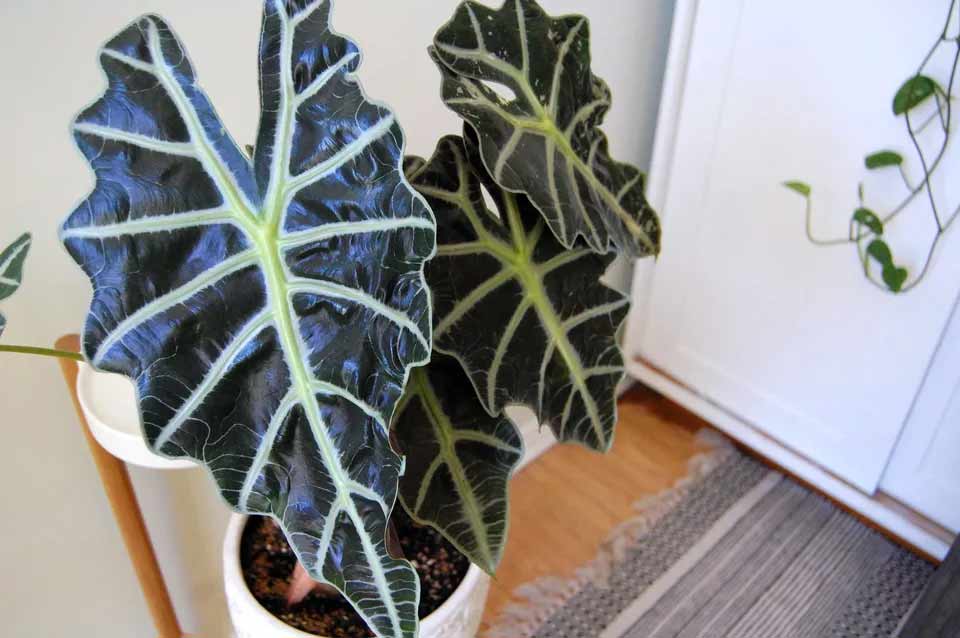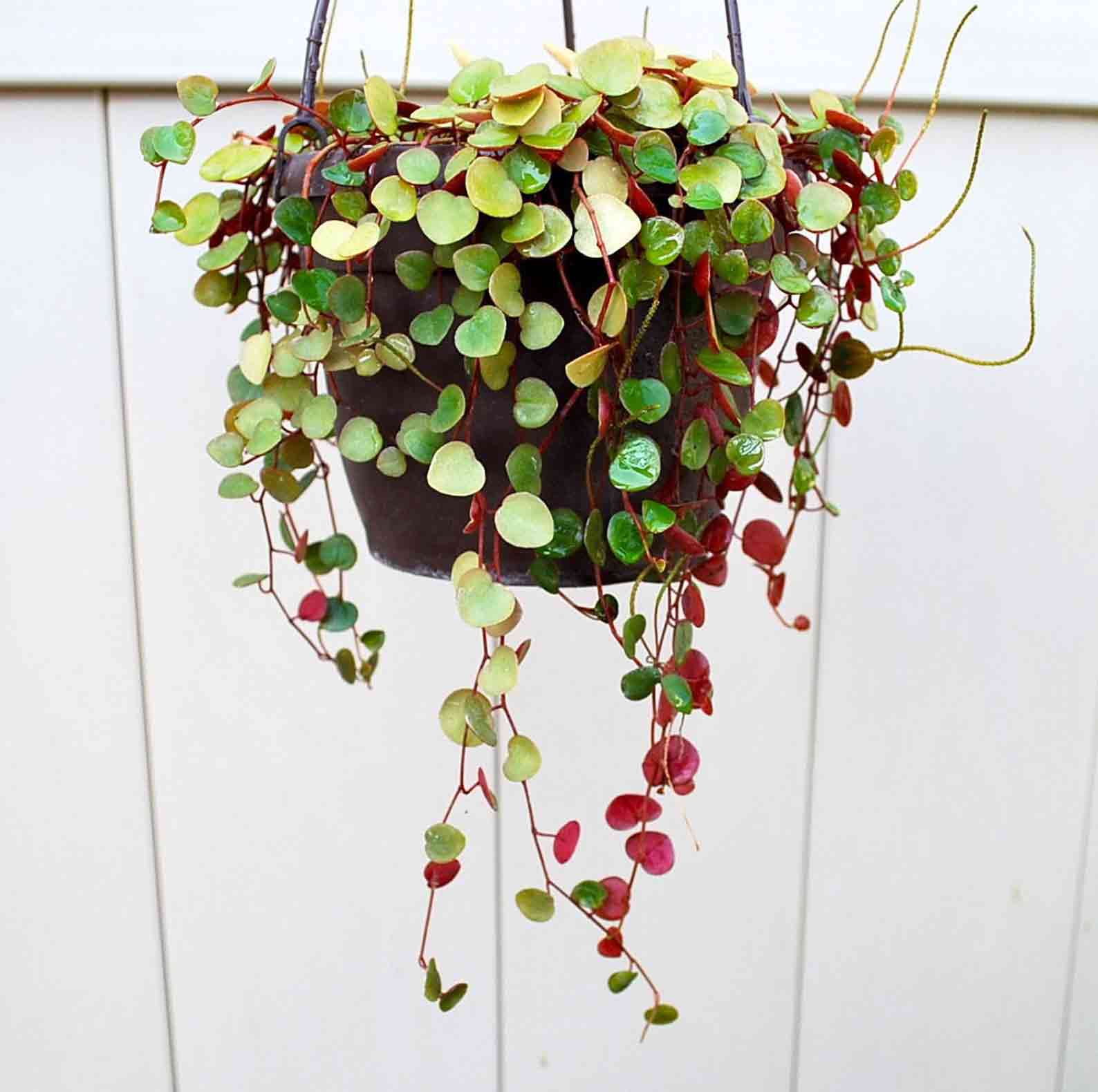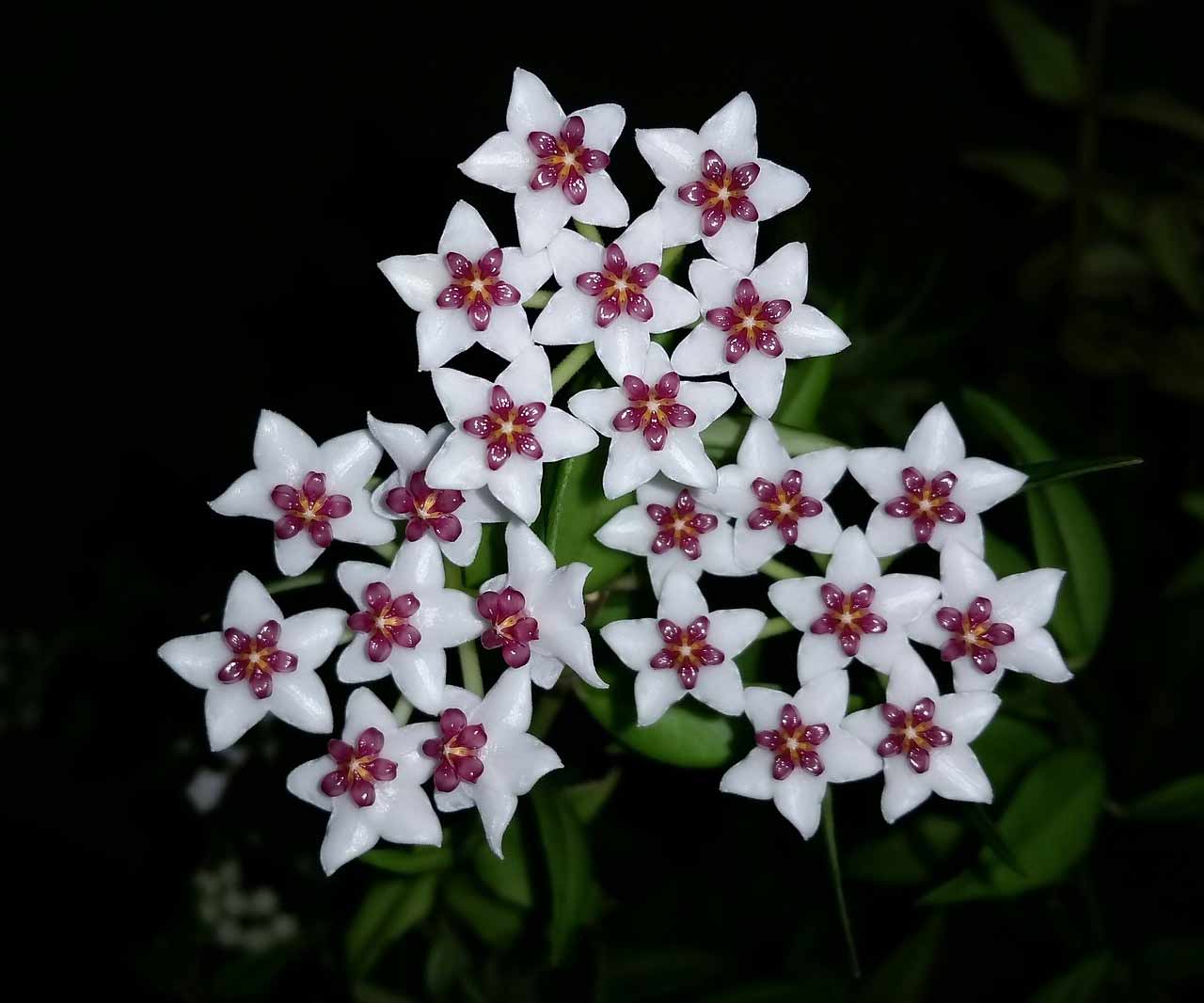
Table of Contents
Elephant’s ear

Image by Adrienne Legault of The Spruce
Elephant ears will lend a dramatic atmosphere to any room with their massive heart-shaped leaves that stretch to up to 3 feet long in warm climates! They come in several species within three different plant genera, including Alocasis, and Xanthosoma. Colocasias are one of the most common types of Elephant ears. You may even recognise Colocasia esculenta, also known as the taro plant.Peperomia Ruby Cascade

You can purchase this Peperomia Ruby Cascade from Etsy seller solsucculents1 here.
As a member of the Piperaceae family, the Peperomia Ruby Cascade has flat, fleshy leaves with red undersides and stems that trail down from whatever pot you might choose to grow it in. Not only does it look fun, but it's also a very easy-going houseplant that is perfectly suited for beginner growers. If you’re looking for a plant with simple needs that aren’t your typical pothos, snake plants or succulents, the Peperomia Ruby Cascade is a fantastic choice.Aglaonemas

Image via Bloomscape
Another colorful tropical indoor plant that is also easy to grow and adaptable to a range of different conditions is the Aglaonema! Their glossy, patterned leaves stem from a center-point and are rimmed with a striking red hue. Aglaonemas can thrive in low lighting conditions of any humidity level, making them the perfect centerpiece for anyone who wants a pop of color but who lives in a darker apartment. Read more about them on Bloomscape.Hoyas

Three clusters of Hoya flowers in bloom
These adorable clusters of star-shaped flowers belong to the Hoya (also known as the wax plant). Hoyas are tropical indoor plants characterized by their thick, waxy leaves, as well as their tolerant natures! As slow growing vines, Hoyas are often sold in hanging baskets and are left to trail from standard planters. However, you may also choose to grow a Hoya upright simply by using a trellis or totem.Alocasias

Image by Cori Sears from The Spruce. Read their Alocasia care guide here!
If you’re a regular on the plant-side of Instagram, chances are that you’re very familiar with Alocasias! With sharp contrasting colors, thick leaves, and its signature jagged shape, we think that Alocasias have some of the most striking foliage out of all common houseplants. These plants are native to subtropical regions in Asia as well as Eastern Australia and come in around 80 different species, some even growing up to three feet long! Fun fact: Most Alocasias propagated as indoor houseplants are hybrids!Philodendron Selloum

Purchase a Philodendron Selloum online from Green Fresh Florals here.
You may know and love the popular Philodendron plant, but have you ever seen a Philodendron Selloum? These plants grow on the East and Gulf coasts in the United States, but are actually native to South America! In order to keep a Philodendron Selloum happy, make sure that you treat it to bright light, moist soil, and relatively humid air. We love the Aspect pendant grow light for bright light that’s perfect for creating a Philodendron Selloum-friendly environment!Fishbone Cactus

Learn more about how to care for this plant from Succulents Network here.
Also known as the Fishbone Cactus, Ric Rac Cactus, or the Zig Zag Cactus, the Epiphyllum Anguliger is one of the most unique succulents out there! Characterized by its distinctive long, dark, and wavy leaves, the Epiphyllum Anguliger occasionally features pale yellow flowers. Mature Epiphyllum Anguligers can reach about 2 inches in leaf diameter and up to 12 inches in leaf length. We love the Epiphyllum Anguliger so much that we predict that it’ll become one of 2021’s most popular houseplant trends. Find the full list of predictions here!Mistletoe Cactus

Image from Gardening Know How. Learn more about growing the Mistletoe Cactus here.
Another one of our favorite tropical succulents has to be the elegant Mistletoe Cactus. This plant is native to rainforests, but is found in a range of locations in the Americas including in Brazil, Mexico, and even Florida! Unlike many succulents, the Mistletoe Cactus thrives in humid air and shady lighting environments, so try and keep it away from full sun.Ficus Altissima

You can purchase one here from livelyroot.com!
Most people are familiar with the instagram famous Fiddle Leaf Fig tree (Ficus Lyrata), but there are a number of wonderful Ficus varieties to explore that are just as striking as the classic Fiddle Leaf Fig. We love the Ficus Altissima, also known as the Council Tree. Unlike the Fiddle Leaf Fig, Council Trees feature pointier, velvety leaves with cream-colored veins. Though they are technically one of the largest canopy trees known today, these evergreen Fiddles grow to heights of up to 10 feet tall in indoor environments.Bird of Paradise

Image by Luca Deasti
A list of anyone’s favorite tropical indoor plants is never complete without mentioning the Bird of Paradise. Its large leaves have the capability to transform just about any room into a tropical getaway. In warmer climates, they are capable of growing distinctive orange flowers that take on the shape of birds, hence the name,’Bird of Paradise.’ Although they may not always flower, these plants are relatively easy to maintain as indoor houseplants. Anyone looking to buy one should note that they can grow quite rapidly when well cared for.


